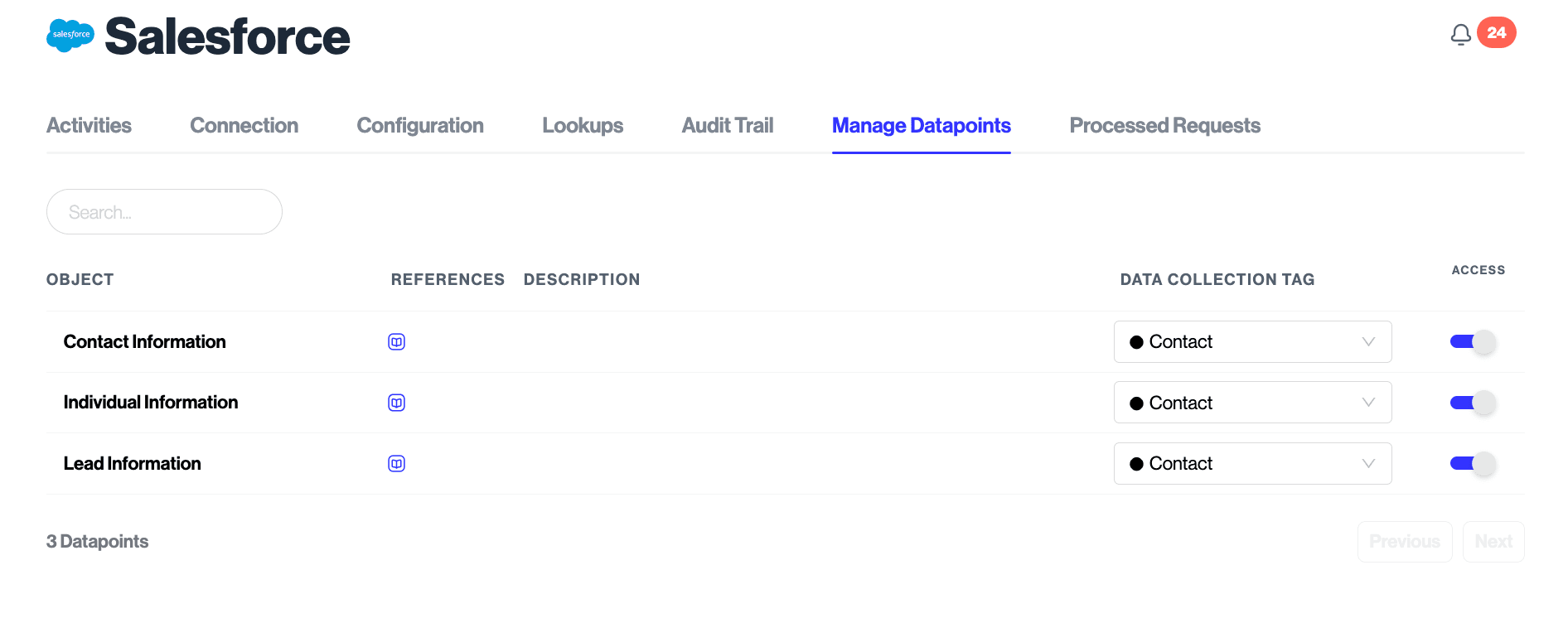Understanding Integrations: DSR Automation
Companies need to honor individual data rights to comply with regulations like GDPR, CCPA, and other privacy laws. Individuals exercise this right by submitting a DSR (data subject request) to a company. Companies then need to access, delete, modify, etc. personal data across all of their systems, including SaaS vendors, data warehouses, and internal databases.
Transcend DSR Automation automatically process these DSRs across all systems within a company's tech stack. Transcend integrates with over 1,500 tools and systems, making it easy for companies to connect their systems and begin processing requests.
To accurately find or delete information on a data subject, Transcend first needs to know what personal data it is looking for within a given system, or in other words, the datapoint. Datapoints defined in an integration have associated actions, allowing the integration to programmatically fulfill different types of DSRs (e.g., access, erasure, opt out, etc.). These actions are commonly API requests that correspond with a type of DSR. However, non-API integrations are supported for databases and data warehouse platforms as well. The types of DSR actions included for each datapoint are dependent on the integrated system itself.

For example, System A stores information about their users. This is available on their API endpoint /users. Transcend’s integration with System A is built with a datapoint for a user. The /users endpoint allows 'get' requests, but not 'delete' requests. The users datapoint in the integration would therefore include an action for access DSRs, but not erasure.
In this way, a Transcend customer could connect hundreds of integrations and Transcend would fulfill all of their DSRs programmatically.
Transcend integrates with tech partners by building onto their API and defining the datapoints, subdatapoints and API endpoints that have personal data and are relevant for privacy rights.
Transcend may use this integration to:
- programmatically process a company's DSRs
- discover a company's data systems
- discover a company's datapoints or schema
Read more about integrating your system for DSR Automation here.